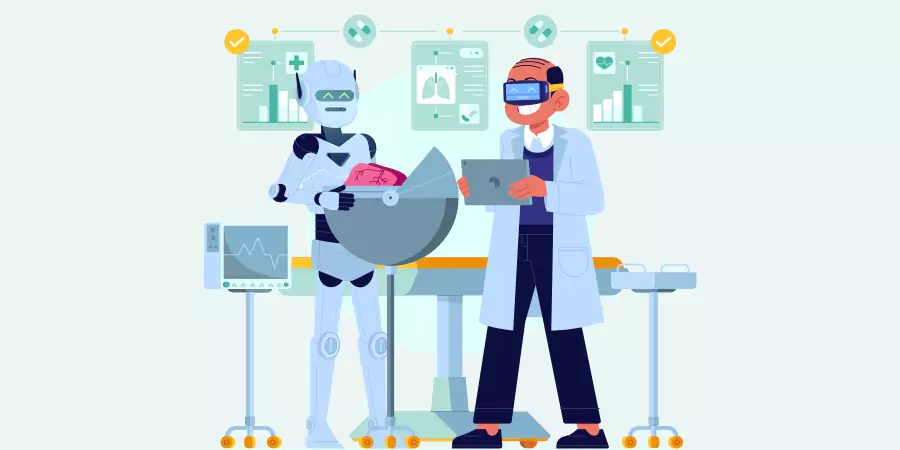As the world embraces Healthcare 5.0, the fusion of AI, IoT, big data, and personalized medicine is pushing the boundaries of what modern healthcare systems can achieve. However, with this surge in innovation comes a significant challenge—data privacy. In a highly digitized healthcare ecosystem, protecting sensitive patient information has become more critical than ever. This is where blockchain technology is gaining traction as a promising solution.
The Rising Stakes of Data Privacy in a Connected Ecosystem
In Healthcare 5.0, data flows freely across digital platforms—wearables, telehealth portals, remote monitoring systems, and AI diagnostics all rely on continuous information exchange. While this connectivity improves outcomes, it also increases vulnerability to breaches, unauthorized access, and misuse of personal health data.
Securing digital health records is not just a technical issue but a matter of public trust. Patients are more likely to engage with smart healthcare solutions when they are confident that their medical history, genetic information, and treatment records are safeguarded from cyber threats.
Traditional centralized systems are no longer adequate. They are susceptible to single points of failure, data tampering, and limited access controls. What is needed is a secure, decentralized model—and this is where blockchain in healthcare enters the scene.
How Blockchain Enhances Data Security in Healthcare 5.0
Blockchain offers a decentralized, tamper-proof ledger system that ensures transparency, security, and immutability. In the context of healthcare, this means every patient interaction, treatment update, or diagnostic entry can be securely recorded and verified without relying on a central authority.
Some key advantages of blockchain in healthcare data privacy include:
- Decentralization: No single entity controls the data, reducing the risk of data manipulation or centralized hacking.
- Immutability: Once data is recorded on a blockchain, it cannot be altered or deleted, ensuring a clear and trustworthy audit trail.
- Encryption and Access Control: Advanced cryptographic techniques allow only authorized users to view or modify patient records.
- Patient Ownership of Data: Patients can control who accesses their data, when, and for what purpose, shifting power from institutions to individuals.
These features make blockchain an ideal fit for securing sensitive digital records in a multi-layered healthcare environment.
Blockchain and Cross-Border Healthcare: A New Frontier
One of the transformative goals of Healthcare 5.0 is seamless cross-border care—where patient data can be securely accessed and shared across countries, clinics, and healthcare systems. This is especially critical for global travelers, expatriates, medical tourists, and individuals seeking second opinions abroad.
Currently, cross-border data sharing faces major roadblocks:
- Inconsistent regulations between countries
- Compatibility issues between electronic health record systems
- Privacy laws such as GDPR restricting data transfer without explicit consent
Blockchain can help resolve these challenges. By acting as a universal, standardized data layer, it allows healthcare providers to access verified medical records without violating local privacy laws. Smart contracts—another blockchain feature—can be used to automate consent management, ensuring patients remain in control of their data regardless of location.
For example, if a patient from Germany seeks treatment in Singapore, a blockchain-based platform can facilitate secure, permissioned access to their medical history, imaging results, and prescriptions. This not only improves diagnostic accuracy and reduces redundant testing but also enhances patient safety and care coordination.
Real-World Blockchain Use Cases in Healthcare
Several pilot projects and startups are already demonstrating how blockchain can revolutionize healthcare data management:
- MediLedger in the U.S. is creating secure pharmaceutical supply chains and verifying drug authenticity to prevent counterfeit medications.
- Medicalchain in the UK offers blockchain-powered patient health records with full transparency and user control.
- In Estonia, one of the most digitized countries in the world, blockchain is integrated into the national health system to secure citizen data and monitor access logs.
These real-world examples prove that blockchain is not a theoretical concept—it is an actionable solution ready for wider adoption.
Conclusion
As Healthcare 5.0 continues to evolve, ensuring data privacy, security, and interoperability will be central to its success. Blockchain technology presents a compelling framework for addressing these challenges. By providing a decentralized, secure, and transparent infrastructure, blockchain not only protects sensitive health information but also enables the global vision of borderless, patient-centric care.
The intersection of blockchain and healthcare is not just a technological upgrade—it’s a foundational shift that empowers patients, supports healthcare providers, and ensures trust in an increasingly digital medical landscape.





